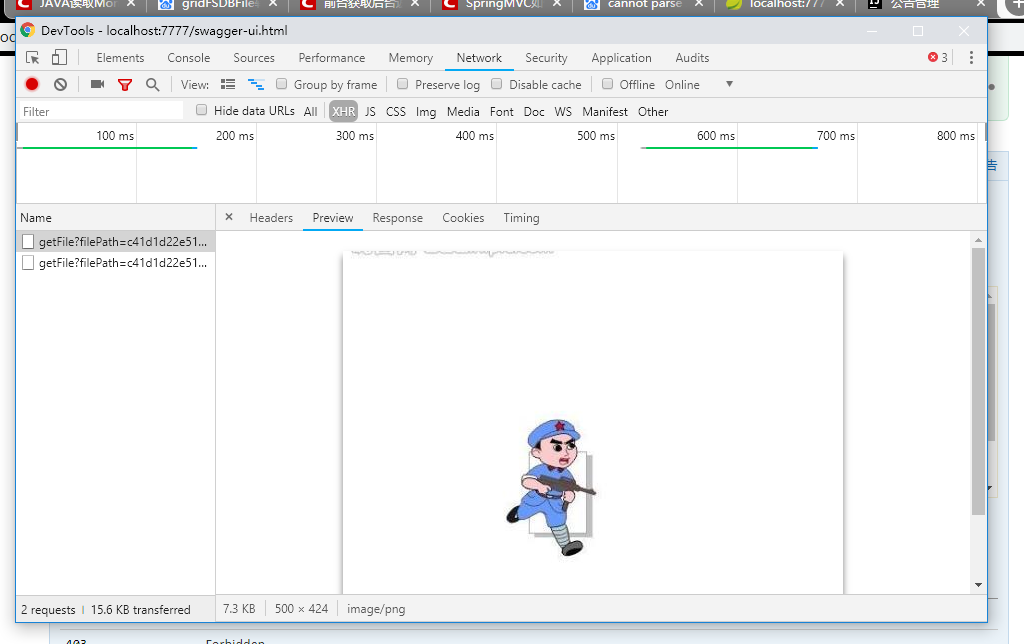可以将文章内容翻译成中文,广告屏蔽插件可能会导致该功能失效(如失效,请关闭广告屏蔽插件后再试):
问题:
In Swift 2, I was able to create queue with the following code:
let concurrentQueue = dispatch_queue_create(\"com.swift3.imageQueue\", DISPATCH_QUEUE_CONCURRENT)
But this doesn\'t compile in Swift 3.
What is the preferred way to write this in Swift 3?
回答1:
Creating a concurrent queue
let concurrentQueue = DispatchQueue(label: \"queuename\", attributes: .concurrent)
concurrentQueue.sync {
}
Create a serial queue
let serialQueue = DispatchQueue(label: \"queuename\")
serialQueue.sync {
}
Get main queue asynchronously
DispatchQueue.main.async {
}
Get main queue synchronously
DispatchQueue.main.sync {
}
To get one of the background thread
DispatchQueue.global(qos: .background).async {
}
Xcode 8.2 beta 2:
To get one of the background thread
DispatchQueue.global(qos: .default).async {
}
DispatchQueue.global().async {
// qos\' default value is ´DispatchQoS.QoSClass.default`
}
If you want to learn about using these queues .See this answer
回答2:
Compiles under Swift 3. This example contains most of the syntax that we need.
QoS - new quality of service syntax
weak self - to disrupt retain cycles
if self is not available, do nothing
async global background queue - for network query
async main queue - for touching the UI.
Of course, you need to add some error checking to this...
DispatchQueue.global(qos: .background).async { [weak self] () -> Void in
guard let strongSelf = self else { return }
strongSelf.flickrPhoto.loadLargeImage { loadedFlickrPhoto, error in
if error != nil {
print(\"error:\\(error)\")
} else {
DispatchQueue.main.async { () -> Void in
activityIndicator.removeFromSuperview()
strongSelf.imageView.image = strongSelf.flickrPhoto.largeImage
}
}
}
}
回答3:
Compiled in XCode 8, Swift 3
https://github.com/rpthomas/Jedisware
@IBAction func tap(_ sender: AnyObject) {
let thisEmail = \"emailaddress.com\"
let thisPassword = \"myPassword\"
DispatchQueue.global(qos: .background).async {
// Validate user input
let result = self.validate(thisEmail, password: thisPassword)
// Go back to the main thread to update the UI
DispatchQueue.main.async {
if !result
{
self.displayFailureAlert()
}
}
}
}
回答4:
I did this and this is especially important if you want to refresh your UI to show new data without user noticing like in UITableView or UIPickerView.
DispatchQueue.main.async
{
/*Write your thread code here*/
}
回答5:
Since the OP question has already been answered above I just want to add some speed considerations:
It makes a lot of difference what priority class you assign to your async function in DispatchQueue.global.
I don\'t recommend running tasks with the .background thread priority especially on the iPhone X where the task seems to be allocated on the low power cores.
Here is some real data from a computationally intensive function that reads from an XML file (with buffering) and performs data interpolation:
Device name / .background / .utility / .default / .userInitiated / .userInteractive
- iPhone X: 18.7s / 6.3s / 1.8s / 1.8s / 1.8s
- iPhone 7: 4.6s / 3.1s / 3.0s / 2.8s / 2.6s
- iPhone 5s: 7.3s / 6.1s / 4.0s / 4.0s / 3.8s
Note that the data set is not the same for all devices. It\'s the biggest on the iPhone X and the smallest on the iPhone 5s.
回答6:
let concurrentQueue = dispatch_queue_create(\"com.swift3.imageQueue\", DISPATCH_QUEUE_CONCURRENT) //Swift 2 version
let concurrentQueue = DispatchQueue(label:\"com.swift3.imageQueue\", attributes: .concurrent) //Swift 3 version
I re-worked your code in Xcode 8, Swift 3 and the changes are marked in contrast to your Swift 2 version.
回答7:
DispatchQueue.main.async {
self.collectionView?.reloadData() // Depends if you were populating a collection view or table view
}
OperationQueue.main.addOperation {
self.lblGenre.text = self.movGenre
}
//use Operation Queue if you need to populate the objects(labels, imageview, textview) on your viewcontroller
回答8:
Swift 3
you want call some closure in swift code then you want to change in storyboard ya any type off change belong to view your application will crash
but you want to use dispatch method your application will not crash
async method
DispatchQueue.main.async
{
//Write code here
}
sync method
DispatchQueue.main.sync
{
//Write code here
}
回答9:
DispatchQueue.main.async(execute: {
// write code
})
Serial Queue :
let serial = DispatchQueue(label: \"Queuename\")
serial.sync {
//Code Here
}
Concurrent queue :
let concurrent = DispatchQueue(label: \"Queuename\", attributes: .concurrent)
concurrent.sync {
//Code Here
}
回答10:
For Swift 3
DispatchQueue.main.async {
// Write your code here
}
回答11:
let newQueue = DispatchQueue(label: \"newname\")
newQueue.sync {
// your code
}
回答12:
it is now simply:
let serialQueue = DispatchQueue(label: \"my serial queue\")
the default is serial, to get concurrent, you use the optional attributes argument .concurrent
回答13:
You can create dispatch queue using this code in swift 3.0
DispatchQueue.main.async
{
/*Write your code here*/
}
/* or */
let delayTime = DispatchTime.now() + Double(Int64(0.5 * Double(NSEC_PER_SEC))) / Double(NSEC_PER_SEC)
DispatchQueue.main.asyncAfter(deadline: delayTime)
{
/*Write your code here*/
}
回答14:
DispatchQueue.main.async(execute: {
// code
})



